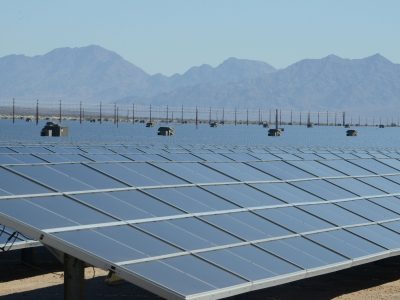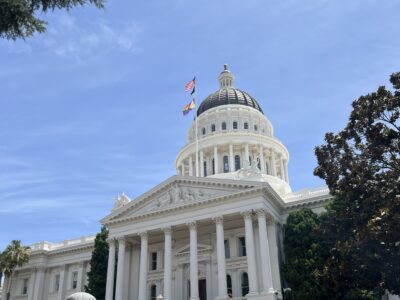The Biden Power Plant Rule and the Major Question Doctrine
The new rule has hardly any of the features that caused the Supreme Court to strike down the Obama rule.
We’ve already started to hear claims that the Biden power plant rule falls under the major question doctrine, which the Supreme Court used to strike down Obama’s Clean Power Plan. Are those claims plausible? Consider the aspects of the Clean Power Plan that the Supreme Court found objectionable. I’ve identified eight factors that the Court seemed to find significant. The Biden power plant rule gets 1.5 points out of a possible 9 on this scale. That’s a score of 17%, which seems less than overwhelming.
Here’s how the Biden rule stacks up for each of the factors:
- Is this “a regulatory program that Congress had conspicuously and repeatedly declined to enact itself”?
No. There have been no prominent failed efforts to require carbon storage and sequestration or co-firing with hydrogen by statute. On the contrary, Congress did adopt very substantial tax credits to encourage the use of these technologies.
- Did EPA use an “ancillary provision” of the Clean Air Act?
Yes. EPA used the same provision here [section 111(d)] that it used to issue the Clean Power Plan.
- Did EPA deviate from “unbroken list of prior Section 111 rules that devised the enforceable emissions limit by determining the best control mechanisms available for the source”?
No. The rules is based on a determination of the best control mechanisms for various types of coal plants.
- Did EPA demand “much greater reductions in emissions based on a very different kind of policy judgment: that it would be “best” if coal made up a much smaller share of national electricity generation”?
No. The emission reductions are based on emission reductions from each source, with coal plant closures playing a minor role. In terms of the use of coal, the IRA will have much more impact than the EPA rule. Prior to the IRA, EPA expected about 112 GW of coal capacity to remain in 2030. EPA expects the IRA to eliminate almost half of that, while the rule will eliminate an extra one-seventh. That’s not insignificant but it’s also earthshaking.
- Did EPA lack “comparative expertise” on the subject”
No. In EPA, the Court said that EPA was regulating the grid, a subject where it lacked expertise. But emission control technologies are EPA’s stock in trade.
- Is the Biden plan “so strict that no existing coal plant would have been able to achieve them without engaging in one of the three means of shifting generation [to other generators]?
No. EPA says that the proposed standards are economically and technologically feasible for many coal plants.
- Would the new plan “cause retail electricity prices to remain persistently 10% higher in many States, and would reduce GDP by at least a trillion 2009 dollars by 2040”?
No. EPA estimates a 2030 initial impact of 2% on electricity prices, falling to 0% within five years. This is partly due to the tax credits and subsidies created by the Inflation Reduction Act.
- Would the plan “entail billions of dollars in compliance costs (to be paid in the form of higher energy prices), require the retirement of dozens of coal-fired plants, and eliminate tens of thousands of jobs across various sectors.”?
Yes and no. It’s not clear that these economic impacts are even part of the test for what’s a major question. They’re mentioned in the Court’s description of the regulation but not in its legal analysis. Just to be complete, I’ll discuss them anyway:
-
- As to jobs, EPA estimates an average loss of a couple of thousand power sector jobs per year out of total employment of around a million in the industry. This doesn’t count all the new jobs that would be created relating to the new technologies that EPA is requiring.
- As to compliance costs for the new rule, EPA is estimating their present value as $4 billion. As noted above, the impact on electricity prices would be miniscule. We now know that the cost of complying with the Obama rule would have been much lower than estimates at the time the rule was drafted.
9. Is the “the point” of the rule “to compel the transfer of power generating capacity from existing sources to wind and solar”?
No. I can’t read EPA Administrator Michael Regan’s mind, but there’s nothing in the rule itself to suggest that its purpose was to prompt generation switching to renewables. And judging by EPA’s projections, it’s not likely to do anything more than modestly accelerate a strong existing trend.
All of this seems pretty far from the Court’s description of what made the Obama rule a “major question”. At most, the Biden rule seems to present a “midsized question.” Apart from using the same section of the Clean Air Act and having substantial projected compliance costs, the two rules couldn’t be more different.
Reader Comments
4 Replies to “The Biden Power Plant Rule and the Major Question Doctrine”
Comments are closed.







the regulation is clearly intended to make coal power so expensive that it forces utilities to other types of fuel.
I’m not sure how we know that. It assume that EPA would not have passed the rule if it thought it was economically feasible for the entire industry to comply. I don’t think that’s especially plausible. I think it’s more accurate to say they’re willing to accept closures as a side-effect. Keep in mind that West Virginia says that it’s ok for EPA to enact rules that have the effect of reducing coal-fired generation in favor of renewables or gas, so long as that isn’t the design of the regulation.
The rule is probably within the first step of this amorphous major questions doctrine in that it involves a matter of great political or economic significance. But, since the rule doesn’t go beyond the fenceline, it will be tough to claim that this is not within EPA’s statutorily delegated authority. So MQD applies, but not violated here.
The real question on this rule seems to be whether CCS is adequately demonstrated such that it could be considered in the BSER analysis.
Dear Buzz : I agree that in some general sense the rule has economic significance, like many EPA air rules, and it will certainly be attacked on Fox and by conservative politicians. But I read the West Virginia opinion as calling for a more narrowly nuanced determination, and few of those factors are present here. Of course, the majority may not have been seriously about limiting MQD doctrine in that way.
In any event, I agree with you that the big question is whether CCS is adequately demonstrated.